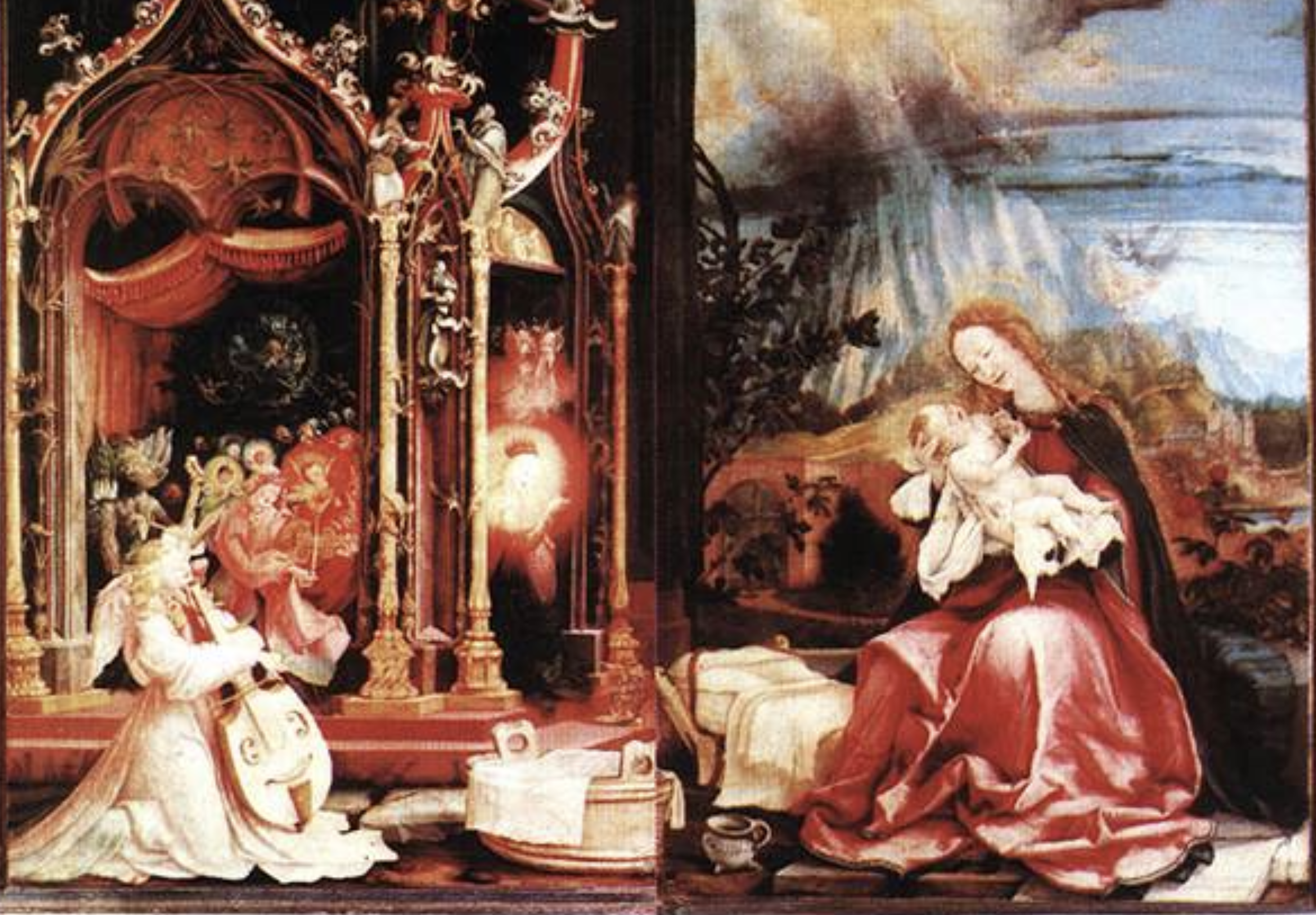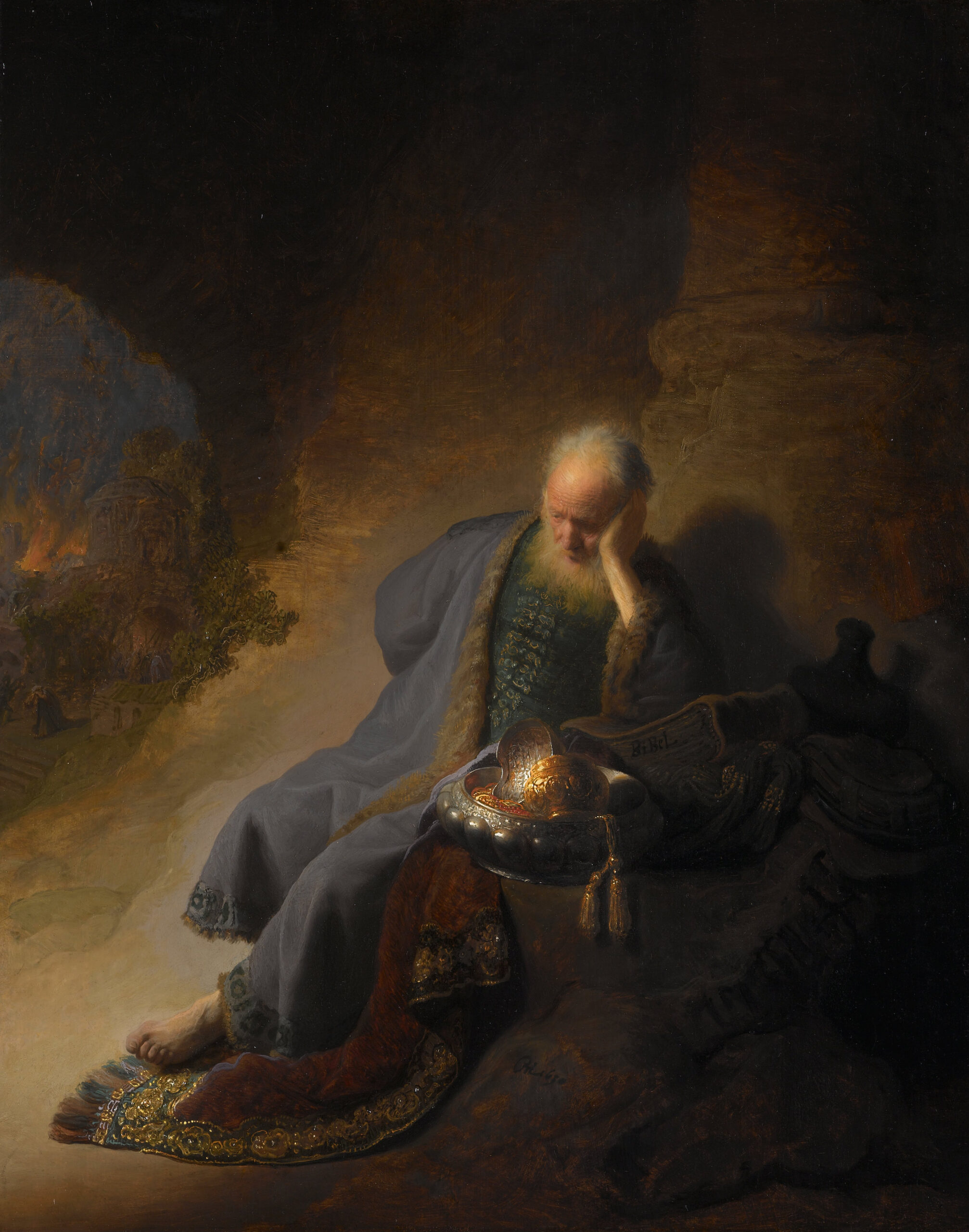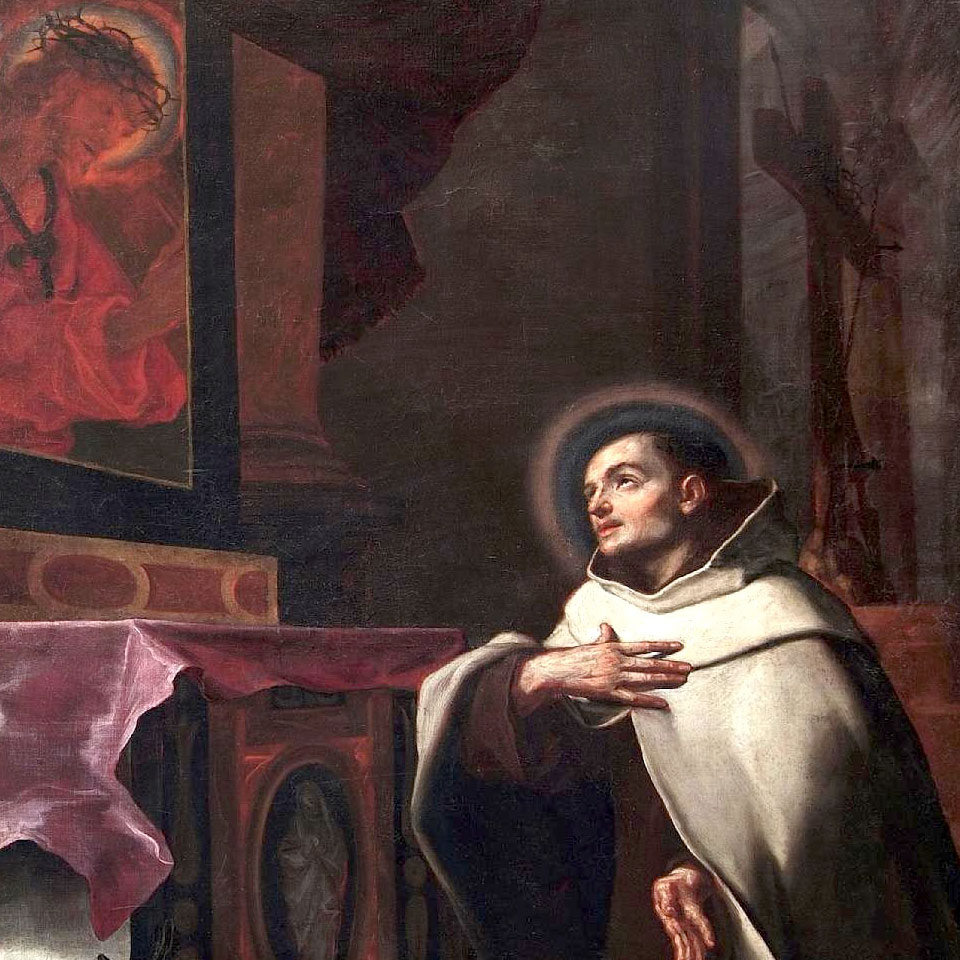Category Archives: December
Dec 18 – O Adonai
Dec 17 – O Sapientia
Why is Christmas December 25th?

-by Jon Sorenson, COO Catholic Answers
“It’s that time of year again when many Christians encounter claims that pagan deities predating Jesus Christ were born on December 25. In popular films, Internet videos, and other media you can find long lists of gods who were supposedly born on the same day.
This idea is not limited to unbelievers. I have heard many Christians claim that the date of Christmas was intended to provide an alternative to pagan celebrations. In some ways it has become a pious legend. On the other hand, some Fundamentalist denominations refuse to celebrate Christmas for this reason.
Of all the deities of whom people make this claim, only three can be found to come close: Saturn, Sol Invictus (Unconquered Sun), and Mithras.
Saturnalia
Saturnalia was the feast dedicated to the Roman god Saturn. Established around 220 B.C., this feast was originally celebrated on December 17. Eventually, the feast was extended to last an entire week, ending on December 23. The supposed connection to Christmas is based on the proximity of the two festivals to each other.
This can be found repeatedly on the Internet. In his article Saturnalia: The Reason We Celebrate Christmas in December, columnist Mark Whittington explains:
It has been suggested that Christians in the 4th Century assigned December 25th as Christ’s birthday (and hence Christmas) because pagans already observed this day as a holiday. In this way the problem of eliminating an already popular holiday would be sidestepped, thus making the Christianizing of the population easier.
If the suggestion were correct, one would expect to find at least a single reference by early Christians to support it. Instead we find scores of quotations from Church Fathers indicating a desire to distance themselves from pagan religions.
Sol Invictus and Mithras
The feast of Sol Invictus was the attempt by the Roman emperor Aurelian to reform the cult of Sol, the Roman sun god, and and reintroduce it to his people, inaugurating Sol’s temple and holding games for the first time in A.D. 274. Not only was this festival not annual, it also cannot be historically documented as having been established on December 25 by Aurelian (cf. Steven HijMans, Sol Invictus, The Winter Solstice, and the Origins of Christmas, Mouseion, Series III, vol. 3, pp. 377-398).
According to inscriptions on candle votives and other ancient works of art, there is a link between Mithras and Sol Invictus. In some cases, it appears the Mithraists believed that Mithras and Sol were two different manifestations of the same god. In others, they appear to be two gods united as one. These connections are difficult to understand given our limited knowledge of the Mithraic belief system, but they are important because they help to explain why skeptics claim the birthday of Mithras was celebrated on December 25.
A manuscript known as the Chronography of 354 shows the birth of Sol Invictus being celebrated on December 25. Given the fact that the Mithraists equated their god with Sol in one way or another, it is understandable that they may have appropriated the date as their own. The problem for the skeptic is that no evidence exists to suggest that Aurelian was a Mithraist, or that he even had Mithraism in mind when he instituted the feast of Sol Invictus. The connection of Mithra to December 25 is only coincidental.
The deathblow to both the Mithras and Sol Invictus parallels is that the Chronography of 354 is the earliest mention of any pagan god being celebrated on December 25. The celebration of the birth of Christ by Christians is also mentioned on the calendar as having been celebrated on that day, which diminishes the likelihood that the pagan feast came first. At the very least, it negates the claim that it can be proved from the historical record that any December 25 pagan festival predates the Christian tradition.
The Reason for Choosing December 25
Although the date of Christ’s birth is not given to us in Scripture, there is documented evidence that December 25 was already of some significance to Christians prior to A.D. 354. One example can be found in the writings of Hyppolytus of Rome, who explains in his Commentary on the book of Daniel (c. A.D. 204) that the Lord’s birth was believed to have occurred on that day:
For the first advent of our Lord in the flesh, when he was born in Bethlehem, was December 25th, Wednesday, while Augustus was in his forty-second year, but from Adam, five thousand and five hundred years. He suffered in the thirty-third year, March 25th, Friday, the eighteenth year of Tiberius Caesar, while Rufus and Roubellion were Consuls.
The reference to Adam can be understood in light of another of Hyppolytus’ writings, the Chronicon, where he explains that Jesus was born nine months after the anniversary of Creation. According to his calculations, the world was created on the vernal equinox, March 25, which would mean Jesus was born nine months later, on December 25.
Nineteenth-century liturgical scholar Louis Duchesne explains that “towards the end of the third century the custom of celebrating the birthday of Christ had spread throughout the whole Church, but that it was not observed everywhere on the same day” (Christian Worship, Its Origin and Evolution: a study of the Latin liturgy up to the time of Charlemagne, p. 260).
In the West, the birth of Christ was celebrated on December 25, and in the East on January 6.
Duchesne writes “one is inclined to believe that the Roman Church made choice of the 25th of December in order to enter into rivalry with Mithraism. This reason, however, leaves unexplained the choice of the 6th of January” (ibid., p. 261). His solution, therefore, was that the date of Christ’s birth was decided by using as a starting point the same day on which he was believed to have died. This would explain the discrepancies between the celebrations in the East and West.
Given the great aversion on the part of some Christians to anything pagan, the logical conclusion here is that one celebration has nothing to do with the other. In his book, Spirit of the Liturgy, Pope Benedict XVI explains:
The claim used to be made that December 25 developed in opposition to the Mithras myth, or as a Christian response to the cult of the unconquered sun promoted by Roman emperors in the third century in their efforts to establish a new imperial religion. However, these old theories can no longer be sustained. The decisive factor was the connection of creation and Cross, of creation and Christ’s conception (p. 105-107).
While these explanations of how December 25 came to be the date of Christmas are all plausible, we know one thing for sure: The evidence that this day held a special significance to Christians predates the proof of a supposed celebration of Sol Invictus or other pagan deities on that day.
That the Christians chose a date so close to the winter solstice is also not proof that this was done to mimic pagan festivals. The various pagan religions all had festivals spanning the calendar. Whatever month the early Christians might have otherwise chosen would still place Christmas near some pagan celebration, and oppositional theorists would still be making the same claims.
The solstice was important to everyone for agricultural reasons in the same way water is important to the survival of human beings, and so we see rituals involving water showing up in various religions. That doesn’t prove that one borrowed the idea or theme from another.”
Love, Merry Birth of Our Lord,
Matthew
Dec 14 – St John of the Cross, OCD (1541-1591) – a suffering saint’s sense of humor & hope

-by Shaun McAfee, was raised Protestant, Southern Baptist/Non-denominational, but at 24, he experienced a profound conversion to the Catholic Church with the writings of James Cardinal Gibbons and modern apologists. He holds a Masters in Dogmatic Theology. As a profession, Shaun is a veteran and warranted Contracting Officer for the U.S. Army Corps of Engineers and has served in Afghanistan and other overseas locations.
“What if you joined a religious order only to find that the religious lifestyle that once existed in it was now almost unrecognizable? Abuses are everywhere, laxity is the norm, nobody enforces the rules, and anyone who challenges the new status quo is met with cruelty.
You consider leaving, but one special leader within the order tells you that she has big plans and a good friend who will help out, and that she needs your help to do it all. So, you stay—only to be thrown in jail.
What do you do? You love the Church and your order, but your confreres all hate you, and they want you dead. Not just silenced—dead!
That’s where we find the famous Carmelite and Counter-Reformer, St. John of the Cross, whose feast we commemorate today. December 14 is the day he died, but he didn’t die in that prison. He escaped, and where most of us might run away as far as possible or seek vengeance, and certainly leave that religious order, John was stubborn in his commitment to improving anything worth improving, loving anyone worth loving, and telling the world about his Dark Night. After suffering so much, nothing was going to stop him.
But John was not stubborn to the point where he let it affect his ability to work with and respect the opinions of others, nor did he let his stubbornness make him pigheaded; his was a determination, a resolve to do what he knew was right for the glory and love of God, even if it meant he would be hunted, imprisoned, and despised. We can learn from his life to reform correctly, which begins with reforming ourselves.
For John and his Carmelite friend, St. Teresa of Avila, reforming an order was as much a legal, political, and administrative process as it was a spiritual one. There is not a formula to be learned from them for reforming each and every problem in the Church today, but there are lessons about the character and virtue required for those who wish to make better of themselves first and their communities second.
First, if we wish to really help the Church, we must learn detachment. We must become unattached to worldly things. John consistently stressed that “individuals must deprive themselves of their appetites for worldly possessions.”
There is a difference, of course, between owning something for utility or proper entertainment and being attached to something for possession’s sake. The issue with attachment is when we base our happiness on the accumulation of stuff and the hoarding of things that have no eternal value. John explains: “It ought to be kept in mind that an attachment to a creature makes a person equal to that creature; the stronger the attachment, the closer is the likeness to the creature and the greater the equality.”
Next, we must hold strong to the virtue of hope. Hope is an absolute necessity if we are to commit our lives to a constant conversion, and it’s indispensable as well for those hoping to reform the Church in any measure: be it the culture in their parish, the focus of a small group, the consistency of a local chapter of a third order, or just the domestic church of their own family.
Hope is necessary because we’re human and will feel tempted at times to give up or to slacken our efforts. Through hope we can resist and focus on what we know to be true. In moments when we are filled with hope and holy ambitions, John tells us, “As often as distinct ideas, forms, and images occur to them, they should immediately, without resisting them, turn to God with loving affection, in emptiness of everything rememberable.”
The third thing we need to have is what John of the Cross calls “the first passion of the soul and emotion of the will.” He’s referring to joy, one of the fruits of the Spirit. What is joy, though? Our saint tells us:
“Joy is nothing else than a satisfaction of the will with an object that is considered fitting and an esteem for it . . . Active joy which occurs when people understand distinctly and clearly the object of their joy and have the power either to rejoice or not. . . . In this [passive] joy, the will finds itself rejoicing without any clear and distinct understanding of the object of its joy.”
John, though an austere and serious person, knew how to have fun and laugh. Once he escaped from prison, his first stories to his friends were about the funnier things that happened there, and his first homilies made audiences hysterical with his observations of the humorous moments in life.
There’s much more to be studied about St. John of the Cross’s reforming style and accomplishments, but detachment, hope, and joy are the top three we can learn from him to enable our resilience in times of change and performance in times of reform—especially our self-reform. Christian reform is not about novelties and progress but is a return to the soul’s conversion to Christ. True interior reform will keep the whole Church in a constant state of conversion.”
Love & the JOY of the Resurrection,
Matthew
Dec 25 – Lo, How a Rose E’er Blooming!!
Lo! How a Rose e’er blooming
From tender stem hath sprung
Of Jesse’s lineage coming,
As those of old have sung.
It came a flower bright
Amid the cold of winter
When half-spent was the night.
Isaiah ’twas foretold it,
The Rose I have in mind;
And so then we behold it,
The Virgin Mother kind.
To show God’s love aright
She bore to us a Savior
When half-spent was the night.
“All was quiet and still with that quiet stillness that slows one’s step almost without him noticing. Beneath the dark boughs of the forest, the crisp flakes of the newly fallen snow caught and crystalized the silver moonlight. Brother Laurentius, wandering through this melancholic solemnity, observed amid the encircling white and diamond a deep ruby warmth. Stooping, the Cathusian(1)[Brother Laurentius (apocryphal); Carthusian monk Conradus, 1580s, Trier, manuscript anthology] lifted the blooming rose to a silver shaft of light. How strange to find such a flower nestled amid the Christmas snowfall. Still contemplating the blossom, the monk trudged back to the convent. Finding a crystal vase, he placed the rose beneath the gentle candlelight of Mary’s altar.
Brother Laurentius’s(1) midnight discovery, according to tradition, inspired the meditative Advent and Christmastide hymn, “Lo, How a Rose E’er Blooming” (“Es ist ein Ros entsprungen”).
From the beginning, “Lo, How a Rose” was a sort of gentle call to a Marian contemplation. The Church had long seen the Blessed Virgin prefigured in the words of the Song of Songs: “I am a rose of Sharon, a lily of the valleys” (Song 2:1). The first version, which appeared in a German hymnal in 1599, sang of Mary as the rose that “has brought forth a floweret,” Christ. The verse captures the mystique of Mary’s role in the Incarnation of the Son of God. The perfect flower of her holiness provided the fitting stem upon which to form the humanity of the perfect man. Like Br. Laurentius gazing on the color of the rose amid the darkness of night, the listener contemplates the sinless beauty of the Virgin Mother of God amid the pallor of fallen world.
The current version of the hymn, with the powerful harmonies composed by Michael Praetorius in 1609, focuses more on that floweret, Christ:
This Flow’r, whose fragrance tender
With sweetness fills the air,
Dispels with glorious splendor
The darkness everywhere.
We now see Christ as the rose fulfilling Isaiah’s prophecy: “There shall come forth a shoot from the stump of Jesse, and a branch shall grow out of his roots” (Isa 11:1). The grace and truth of the Christ child, like the sweet fragrance of a rose, permeates the rotten decay of our fallen world and makes all things fresh. The gentle light of the newborn king’s face, like the red rose in the field of white, shines out a glorious splendor that will blaze forth on the Mountain of the Transfiguration, obliterate the darkness of the grave in the light of the Resurrection, and flow to every corner of the earth through the faces of his friends who have seen this light.
In this focus on Christ the rose, the hymn retains its Marian aspect. Now, we join the Virgin Mother in her undiluted contemplation of her Son. The goal of the hymn, the purpose, is to join our eyes to those of Mary gazing upon this “flow’ret bright”: “With Mary we behold it.”
Mary is the contemplative par excellence. In her maternal care, we hear several times how she pondered in her heart the mystery of her divine Son (cf. Lk 1:29; 2:18, 51). When we pray the Rosary, we join in Mary’s contemplation, gazing with her into the inexhaustible mystery of her Son.
“Lo, How a Rose” invites us to a similar contemplation. We wonder at “How Christ, the Lord of Glory, / Was born on earth this night.” With Mary we ponder the baby in the crib, knowing that he is “True man, yet very God” and that “From sin and death He saves us.”
Praetorius’s musical arrangement aids this contemplation. The lyrics move slowly and gently through the harmonies, beckoning to us to slow down, to listen, to behold. The chords rise and fall, grow and subside with all the intensity and subtlety of contemplation, one moment powerful, the next moment gentle, yet always moving with a heavenly steadiness.
In this Christmas contemplation, we see ever more clearly what Mary saw and what her motherhood shows:
To show God’s love aright,
She bore to men a Savior,
When half spent was the night.
Christ the flower came breathing forth the fragrance of divine love. He sprung from Mary’s “tender stem” to reveal the love of God, to manifest in visible form the heights and depths of God’s love. “To show God’s love aright,” God’s only Son became the Son of Man, born our brother through Mary, that we might be born his brothers through grace, becoming sons of God.
With Mary, then, we behold afresh the flowering of grace and new life in the Christ Child.
Love & the budding joy only He can give,
Matthew
(1) O’Sullivan, J. (2008). There Is a Rose Come Forth. The Furrow, 59(4), 242-245. Retrieved from www.jstor.org/stable/27665728
Dec 28 – Is the massacre of the Holy Innocents historical? Mt 2:16-18

-Matteo di Giovanni, a tempera on panel painting by Matteo di Giovanni, produced between 1450 and 1500 possibly in 1468, 1478, or 1488) probably in Siena. It was commissioned by Alfonso II of Naples, then living in Siena as part of the campaign against the Medici. It was probably produced to commemorate the inhabitants of Otranto killed by the Ottomans in 1480 whose relics were moved into the church of Santa Caterina at Formiello at Alfonso’s request – the same church also originally housed the painting. It is now in the National Museum of Capodimonte. Please click on the image for greater detail.
“When Herod realized that he had been outwitted by the Magi, he was furious, and he gave orders to kill all the boys in Bethlehem and its vicinity who were two years old and under, in accordance with the time he had learned from the Magi.
Then what was said through the prophet Jeremiah was fulfilled:
“A voice is heard in Ramah,
weeping and great mourning,
Rachel weeping for her children
and refusing to be comforted,
because they are no more.””
-Mt 2:16-18
Jewish historian Josephus mentions in his Antiquities of the Jews (c. AD 94), which records many of Herod’s misdeeds, including the murder of three of his own sons
The first non-Christian reference to the massacre is recorded four centuries later by Macrobius (c. 395–423), who writes in his Saturnalia:
“When he [Emperor Augustus] heard that among the boys in Syria under two years old whom Herod, king of the Jews, had ordered killed, his own son was also killed, he said: it is better to be Herod’s pig, than his son.”
Coventry Carol
Lully, lullay, thou little tiny child,
Bye bye, lully, lullay.
Thou little tiny child,
Bye bye, lully, lullay.
O sisters too, how may we do
For to preserve this day
This poor youngling for whom we sing,
“Bye bye, lully, lullay”?
Herod the king, in his raging,
Chargèd he hath this day
His men of might in his own sight
All young children to slay.
That woe is me, poor child, for thee
And ever mourn and may
For thy parting neither say nor sing,
“Bye bye, lully, lullay.”
The commemoration of the massacre of the Holy Innocents, traditionally regarded as the first Christian martyrs, if unknowingly so, first appears as a feast of the Western church in the Leonine Sacramentary, dating from about 485 AD. The earliest commemorations were connected with the Feast of the Epiphany, 6 January: Prudentius mentions the Innocents in his hymn on the Epiphany. Pope St Leo the Great in his homilies on the Epiphany speaks of the Innocents. Fulgentius of Ruspe (6th century AD) gives a homily De Epiphania, deque Innocentum nece et muneribus magorum (“On Epiphany, and on the murder of the Innocents and the gifts of the Magi”).

-by Trent Horn
“Matthew 2:12 tells us that the Magi were warned in a dream not to return to Herod the Great after visiting Jesus and his family, and so they departed for their country by another way. Herod, upon realizing their failure to report to him, subsequently ordered all the male children in Bethlehem under the age of two to be executed (Matt. 2:16). Atheist C.J. Werleman wrote of this story:
[T]here is no record of King Herod or any Roman ruler ever giving such an infanticidal statute. In fact, the ancient historian Josephus, who extensively recorded Herod’s crimes, does not mention this baby murdering, which would undoubtedly have been Herod’s greatest crime by far.
Now, it is true that Matthew did not intend to write a literal history of Jesus’ birth. The evangelist uses various narrative devices in order to underscore the reality of Jesus being the “new Moses.” On that view, one of those devices could be the creation of a story that parallels the slaughter of the Hebrew infants from which Moses was spared (Exod. 1:22).
But this approach to Scripture often evinces a “hermeneutic of suspicion” and begins with an assumption that denies not just the miraculous but also the providential. From this perspective, real historical events can’t “rhyme” with one another in order to demonstrate God’s sovereignty over time and space. Any such “marvelous coincidences” have to be explained as the inventions of a rather mundane author who is just riffing on older source material.
The evidence does not, however, point to the Gospels being such purely allegorical accounts. Matthew’s narrative diverges significantly from Moses’ birth story. For example, Jesus is raised by his mother instead of in Herod’s court and Moses flees as an adult from Egypt whereas Jesus flees as a child to Egypt. In his book Jesus of Nazareth: The Infancy Narratives, Pope Benedict XVI wrote,
What Matthew and Luke set out to do each in his own way, was not to tell “stories” but to write history, real history that had actually happened, admittedly interpreted and understood in the context of the word of God. Hence the aim was not to produce an exhaustive account, but a record of what seemed important for the nascent faith community in the light of the word. The infancy narratives are interpreted history, condensed and written down in accordance with the interpretation.
But what about the argument from silence that atheists like Werleman make? If this massacre really did happen, then why didn’t any other author—biblical or non-biblical—record it?
First, Mark and John do not discuss any of the events surrounding Jesus’ birth, so we wouldn’t expect them to talk about the slaughter of the innocents. Second, Luke and Matthew’s accounts are complementary, not redundant, and so it isn’t surprising that there are details unique to each account be it Matthew’s description of Herod’s slaughter of the innocents or Luke’s description of Caesar Augustus’ enrollment of the population in what later authors describe as a “census” (Luke 2:1).
Such an act of cruelty perfectly corresponds with Herod’s paranoid and merciless character, which bolsters the argument for its historicity. Josephus records that Herod was quick to execute anyone he perceived to threaten his rule, including his wife and children (Antiquities 15.7.5–6 and 16.11.7). Two Jewish scholars have made the case that Herod suffered from “Paranoid Personality Disorder,” and Caesar Augustus even said that it was safer to be Herod’s pig than his son.
In addition, first-century Bethlehem was a small village that would have included, at most, a dozen males under the age of two. Josephus, if he even knew about the massacre, probably did not think an isolated event like the killings at Bethlehem needed to be recorded, especially since infanticide in the Roman Empire was not a moral abomination as it is in our modern Western world.
Herod’s massacre would also not have been the first historical event Josephus failed to record.
We know from Suetonius and from the book of Acts that the Emperor Claudius expelled the Jews from Rome in A.D. 49, but neither Josephus nor the second century Roman historian Tacitus record this event (Acts 18). Josephus also failed to record Pontius Pilate’s decision to install blasphemous golden shields in Jerusalem, which drove the Jews to petition the emperor for their removal. The Alexandrian philosopher Philo was the only person to record this event.
Sometimes historians choose not to record an event, and their reasons cannot always be determined. In the nineteenth century Pope Leo XIII noted the double standard in critics for whom “a profane book or ancient document is accepted without hesitation, whilst the Scripture, if they only find in it a suspicion of error, is set down with the slightest possible discussion as quite untrustworthy” (Providentissimus Deus, 20).
We should call out this double standard when critics demand that every event recorded in Scripture, including the massacre of the Holy Innocents, be corroborated in other non-biblical accounts before they can be considered to be historical.”

-Le Massacre des Innocents by Sebastien Bourdon, early 1640s, oil on canvas, height: 126 cm (49.6 in); width: 177 cm (69.6 in), Hermitage Museum, Paris, France, please click on the image for greater detail
Love & truth,
Matthew
Dec 25 – silence

-Isenheim altar piece, 2nd view, Mathias Grünewald, 1512-1516, Unterlinden Museum at Colmar, Alsace, in France, painted for the Monastery of St. Anthony in Isenheim near Colmar, which specialized in hospital work. The Antonine monks of the monastery were noted for their care of plague sufferers as well as their treatment of skin diseases, such as ergotism, aka St Anthony’s Fire. Ergotism sufferers endure spasms especially of the hands, legs, and feet. They also endure a dry gangrene. It is the result of fungus on cereal grains, which can still occur today; and, more recently, through ergoline-based drugs. The image of the crucified Christ is pitted with plague-type sores, showing patients that Jesus understood and shared their afflictions. The veracity of the work’s depictions of medical conditions was unusual in the history of European art. Please click on the image for greater detail.
Let all mortal flesh keep silence,
and with fear and trembling stand;
ponder nothing earthly-minded,
for with blessing in His hand,
Christ our God to earth descendeth,
our full homage to demand.
King of kings, yet born of Mary,
as of old on earth He stood,
Lord of lords, in human vesture,
in the body and the blood;
He will give to all the faithful
His own self for heavenly food.
Rank on rank the host of heaven
Spreads its vanguard on the way,
As the Light of light descendeth
From the realms of endless day,
Comes the powers of hell to vanquish
As the darkness clears away.
At His feet the six-winged seraph,
cherubim, with sleepless eye,
veil their faces to the presence,
as with ceaseless voice they cry:
Alleluia, Alleluia,
Alleluia, Lord Most High!
“”Christ our God to earth descendeth.” The Incarnation establishes a new presence of God among us. Jesus Christ, the eternal Son of the Father, comes to us as a little babe, wherein the “the fullness of God dwells bodily” (Col 2:9). On the one hand, God is already present everywhere, isn’t He? And on the other, the seraphim and cherubim do not “veil their faces to the presence” just everywhere. So what exactly is this new presence among us that evokes our “fear and trembling”?
Saint Thomas Aquinas describes God’s presence among creatures in a variety of ways (ST I, q. 8, a. 3). First, He is omnipresent by His essence, presence, and power. God’s creative act, His knowledge of creatures, and His governance of the world touch all things, and because of this connection, God is present there. Without God’s presence in these ways, creatures would cease to exist. From the highest of the blessed in heaven to the lowest and most mundane dust of the earth, things exist only because God is willing to be close to us. Beyond this universal presence, God can make Himself present in special ways as well. To intellectual creatures, God can give Himself as an object of our knowing and loving. That is to say, by pouring faith and charity into our hearts, God makes Himself present in us, dwelling in us as in a temple. 1 Cor 6:19.
There is another kind of presence of God, to which the angels veil their faces in homage and adoration. This presence is not merely by causation, or even the sublime gift of divine indwelling. The personal being of the Son unites to Himself a human nature, so that the man Jesus does not just possess grace to an eminent degree; rather, Jesus is truly God. The King of kings and Lord of lords Himself comes to us, taking on a human nature. The infant in the manger is not merely a sign of God’s presence. Jesus is God, the Incarnate Word.”
Love,
Matthew
Dec 26 – Lá Fhéile Stiofáin/Lá an Dreoilín

-Wrenboys on Wren Day in Dingle, Ireland, please click on the image for greater detail
The wren, oh the wren; he’s the king of all birds,
On St. Stephen’s Day he got caught in the furze,
So it’s up with the kettle and it’s down with the pan,
Won’t you give us a penny for to bury the wren?
Well it’s Christmas time; that’s why we’re here,
Please be good enough to give us an ear,
For we’ll sing and we’ll dance if youse give us a chance,
And we won’t be comin’ back for another whole year!
We’ll play Kerry polkas; they’re real hot stuff,
We’ll play the Mason’s Apron and the Pinch of Snuff,
Jon Maroney’s jig and the Donegal reel,
Music made to put a spring in your heel!
If there’s a drink in the house, would it make itself known,
Before I sing a song called “The Banks of the Lowne”,
A drink with lubri-mication in it,
For me poor dry throat and I’ll sing like a linnet!
Oh please give us something for the little bird’s wake,
A big lump of pudding or some Christmas cake,
A fist full o’ goose and a hot cup o’ tay (Tea),
And then we’ll all be goin’ on our way!
The wren, oh the wren; he’s the king of all birds,
On St. Stephen’s Day he got caught in the furze,
So it’s up with the kettle and it’s down with the pan,
Won’t you give us a penny for to bury the wren?
December 26 is one of nine official public holidays in Ireland, in English, Wren Day. This name alludes to several legends, including those found in Irish mythology, linking episodes in the life of Jesus to the wren. People dress up in old clothes, wear straw hats and travel from door to door with fake wrens (previously real wrens were killed) and they dance, sing and play music.
Depending on which region of the country, they are called “wrenboys” and mummers. A Mummer’s Festival is held at this time every year in the village of New Inn, County Galway, and Dingle in County Kerry. Mumming is also a big tradition in County Fermanagh in Ulster. Saint Stephen’s Day is a popular day for visiting family members and going to the theatre to see a pantomime. In most of Ulster in the north of Ireland, the day is usually known as Boxing Day, especially in Northern Ireland and County Donegal.
Irish further appended St Stephen’s Day with the hunting of wren. At some point during the Feast of St. Stephen, the children from each family would find a wren and chase it until it was captured or died from exhaustion. After “going on the wren,” the children would tie the dead bird to the end of a pole or put it in a cage and parade around town singing.
Each group would stop at homes around the neighborhood, show their bird and collect some money. At the end of the day, the money the town’s children gathered was pooled and used to host a huge city-wide dance.
There are two tales why the wren became the unfortunate victim of the day. In one version, St. Stephen had all but eluded his capture when a singing wren betrayed his hiding place. The other explanation is that during the Viking raids on the Emerald Island in the eighth century, wrens betrayed the Irish soldiers’ location and foiled a potential ambush.
——————————————–

-Cardinal Miloslav Vlk with the skull of Saint Wenceslaus during a procession on September 28, 2006, please click on the image for greater detail
“Good King Wenceslas” is a Christmas carol that tells a story of a Bohemian king going on a journey and braving harsh winter weather to give alms to a poor peasant on the Feast of Stephen (December 26, the Second Day of Christmas). During the journey, his page is about to give up the struggle against the cold weather, but is enabled to continue by following the king’s footprints which are warmed by the saint’s holiness, step for step, through the deep snow. The legend is based on the life of the historical Saint Wenceslaus I, Duke of Bohemia or Svatý Václav in Czech (907–935). The name Wenceslas is a Latinised version of the old Czech language “Venceslav”.
Good King Wenceslas looked out, on the Feast of Stephen,
When the snow lay round about, deep and crisp and even;
Brightly shone the moon that night, tho’ the frost was cruel,
When a poor man came in sight, gath’ring winter fuel.
“Hither, page, and stand by me, if thou know’st it, telling,
Yonder peasant, who is he? Where and what his dwelling?”
“Sire, he lives a good league hence, underneath the mountain;
Right against the forest fence, by Saint Agnes’ fountain.”
“Bring me flesh, and bring me wine, bring me pine logs hither:
Thou and I shall see him dine, when we bear them thither.”
Page and monarch, forth they went, forth they went together;
Through the rude wind’s wild lament and the bitter weather.
“Sire, the night is darker now, and the wind blows stronger;
Fails my heart, I know not how; I can go no longer.”
“Mark my footsteps, good my page. Tread thou in them boldly
Thou shalt find the winter’s rage freeze thy blood less coldly.”
In his master’s steps he trod, where the snow lay dinted;
Heat was in the very sod which the saint had printed.
Therefore, Christian men, be sure, wealth or rank possessing,
Ye who now will bless the poor, shall yourselves find blessing.
“Today is known as Boxing Day in England, where the wealthy would traditionally give gifts to their servants and to the less fortunate. Interestingly enough, there is a link between this secular commemoration, today’s liturgical feast of Saint Stephen, and the message of the mid-nineteenth century English carol, Good King Wenceslaus. While both St. Stephen and Wenceslaus wore the martyr’s crown, they were also known for their service to the poor, which they undertook for the sake of Christ. Their mutual witness shows us how the mystery of Christmas can transform us into loving disciples of the newborn Savior.
In the Acts of the Apostles, we find Stephen, a young man “full of grace and power” who “did great wonders and signs among the people” (Acts 6:8). As one of the first deacons, he was committed to serving the poor and widows, so that the Apostles could freely fulfill their preaching mission. He defended the Faith against those who were trying to silence the followers of Christ, eventually succumbing to death by stoning. We celebrate him as the first martyr on the day after Christmas, because he reminds us of the ultimate mission of the newborn savior, who came to earth in order to die for our sins.
With St. Stephen as his example, it was quite fitting that “Good King Wenceslaus looked out on the feast of Stephen.” Who was this good “King Wenceslaus”? Wenceslaus I—more precisely, the Duke of Bohemia—was born around 907. His path to holiness was inspired by his grandmother, Saint Ludmila, who was one of the first to be baptized in Bohemia. He succeeded his father as duke when he was only a teenager, and was known for his devotion and virtue. Like Stephen, Wenceslaus assisted the poor with alms as a young man. In 935, he was killed by his brother, who resented Wenceslaus’ allegiance to both the Church and the German king. Saint Wenceslaus has been venerated as a martyr ever since his death.
It is the charity of St. Wenceslaus that is the major theme of the carol that bears his name, but we must carefully read each verse in order to unlock this message. We find the first clue at the end of verse 1: “When a poor man came in sight gath’ring winter fuel.” In verse 3, Wenceslaus and his page feed this poor man and provide him with firewood for the wintry night. By verse 4, the page is spent, unable to go further due to the cold. Wenceslaus commands him to follow in his steps, as “Heat was in the very sod which the saint had printed.” The presence of the saint radiates the love of Christ in the midst of the winter’s cold. It was Christ Whom Wenceslaus proclaimed, for His coming into the world scatters the darkness and warms the hardened hearts of sinners. All of us, regardless of status, must serve Christ in the poor and helpless, for in doing so, we proclaim the good news of salvation with the hope of eternal life. The final words of the carol teach such a lesson:
“Therefore, Christian men, be sure,
wealth or rank possessing,
Ye who now will bless the poor,
Shall yourselves find blessing.”
Saint Wenceslaus lived this lesson eminently, humbling himself from his throne to help the poor and downtrodden.
Christmastime can prompt us to help those who are needy, yet such sentiments for good deeds should not be a mere formality or come by way of social obligation. Rather, they must be rooted in a love for the Infant lying in the manger. Christ’s lowly birth shows us our own poverty and weakness, as He descended among us to raise us out of the poverty of sin. Saints Stephen and Wenceslaus are venerated as martyrs, yet their witness includes a love for Christ in the poor, which preceded their ultimate sacrifice for Him. Their example inspires us to bring the love of the newborn Christ to all those we encounter, both at Christmas and throughout the whole year.”
Love,
Matthew
Dec 25 – Lamentation of the Destruction of Jerusalem

-Jeremiah Lamenting the Destruction of Jerusalem, Rembrandt, 1630, Oil on panel, 58 cm × 46 cm (23 in × 18 in) Rijksmuseum, Amsterdam, Netherlands, please click on the image for greater detail.

-by Br John Bernard Church, OP, English Province
“At the centre of Rembrandt’s moving portrait we have the wizened face of the prophet Jeremiah. His look is one of despair, mourning the destruction of the city behind him. Sitting alone, the lacklustre resignation of his posture seems ill-fitting for one dressed in such resplendent robes, and the array of silverware at his side evidently provides little comfort. Our immediate impression is of a man completely at a loss, whose material comforts and earthly grandeur seem out of place in the midst of such tragedy.
The blurry background of the burning Temple in Jerusalem is almost dreamlike, set against the sharp detail of the prophet’s haggard expression. Perhaps even he, who has spent his life prophesying this moment, can hardly believe it has happened. He said this time would come, that the Babylonians would destroy the Temple: “Take warning, O Jerusalem”. Yet he was met with rejection: “See, their ears are closed, they cannot listen” (Jer 6:8-10). This is a depiction of a prophet lamenting: he shows no satisfaction in his vindication, rather the grieving figure ponders what more he could have done.
“Hear, O earth; I am going to bring disaster on this people, the fruit of their schemes, because they have not given heed to my words” (Jer 6:19).
But I don’t think Rembrandt really does depict a prophet in despair. One mourning, lamenting, grieving certainly, but not despair. To despair is to give up, to lack any hope, and this prophet does not lack hope.
Jeremiah features rarely in the Advent liturgies, where pride of place among the prophets is given to Isaiah. His doleful lamentations are more fittingly read in Lent: describing himself as the “gentle lamb led to the slaughter” (Jer 11:19), his words point us forward to the Passion.
However, this week we are given Jeremiah’s sole messianic prophecy, a rare glimmer of light amidst his warnings of judgment and destruction: at some future, unspecified time, the Lord will raise up a righteous branch for David, “who shall reign as king and deal wisely, and shall execute justice and righteousness in the land” (Jer 23:5).
This is the hope that carries the prophet. He need not despair, for even as the Temple in Jerusalem burns, he knows a time of justice and peace is coming: the Temple that will be raised up on the third day.
In the eyes of Rembrandt, this interior hope of the prophet takes on a physical form. In the middle of the painting, dimly lit and easily missed next to the glimmer of jewels, is a volume of the Torah. A later editor has helpfully scrawled ‘Bibel’ on it in cased we missed the point. Jeremiah leans heavily on the book, bent beneath his weight: while the earthly wealth may grab our attention, the Lord’s covenant with His people contained in the Torah is what holds this painting together. It is the hope that sustains the prophet.
Advent for us too is about a hope that lives within us taking on a physical form. The form of a baby no less, as we wait patiently for our Incarnate Lord.
Jeremiah’s name in Hebrew means ‘The Lord will restore’: while the nearby destruction may give him the appearance of despair, his hope in the Lord remains steadfast. So too may we remain steadfast in hope for the coming of our Saviour, looking to Jeremiah just as the Letter of St James reminds us: “Brethren, take as an example of suffering and patience the prophets, who spoke in the name of the Lord” (James 5:10).”
Love & the joy only He can give,
Matthew






